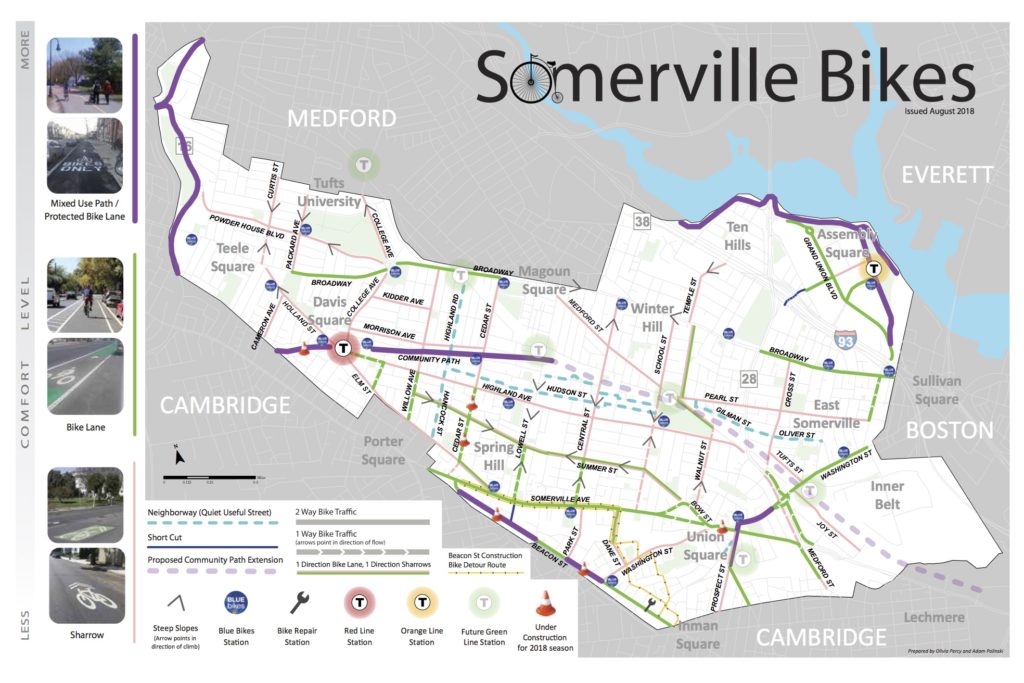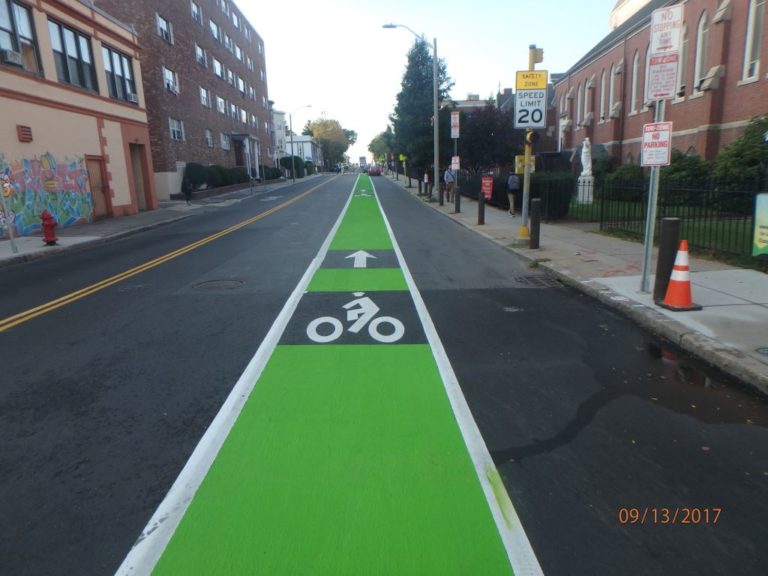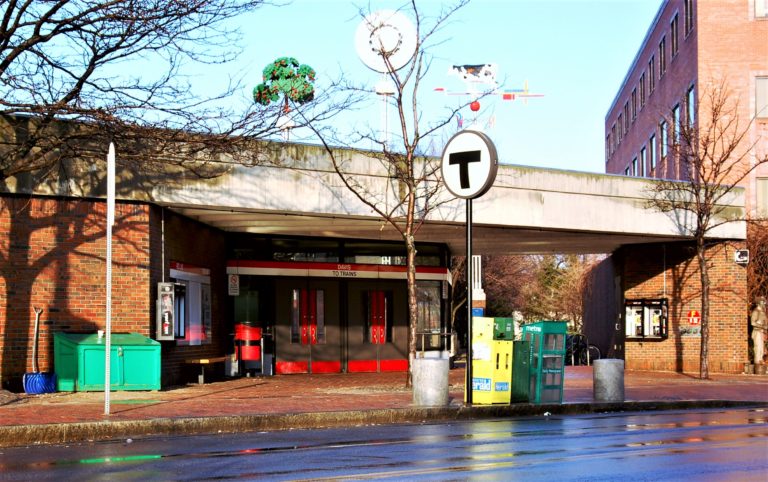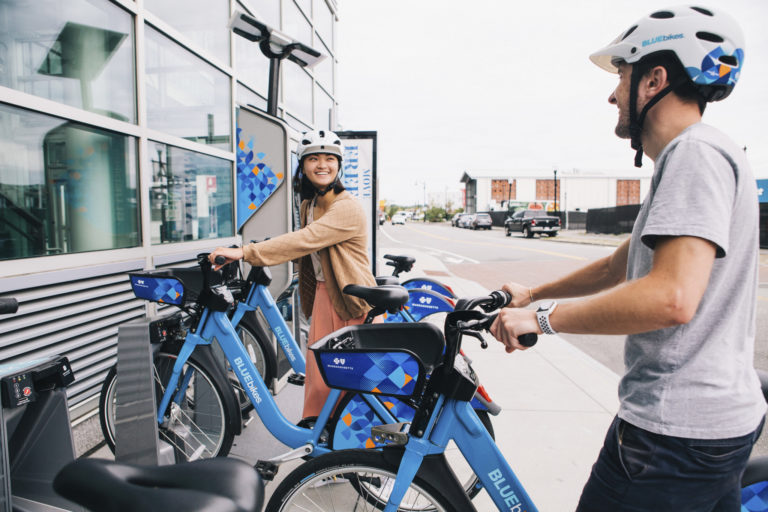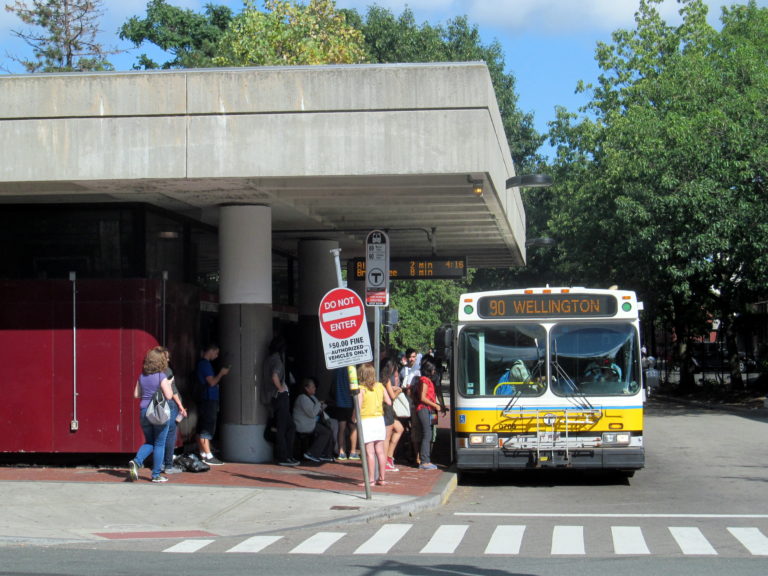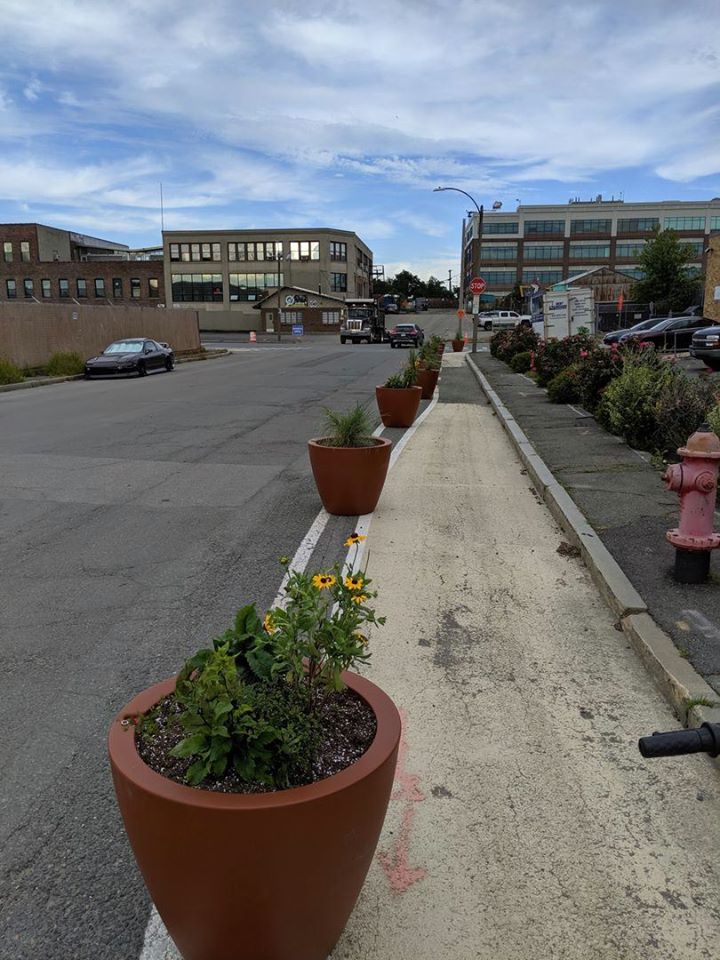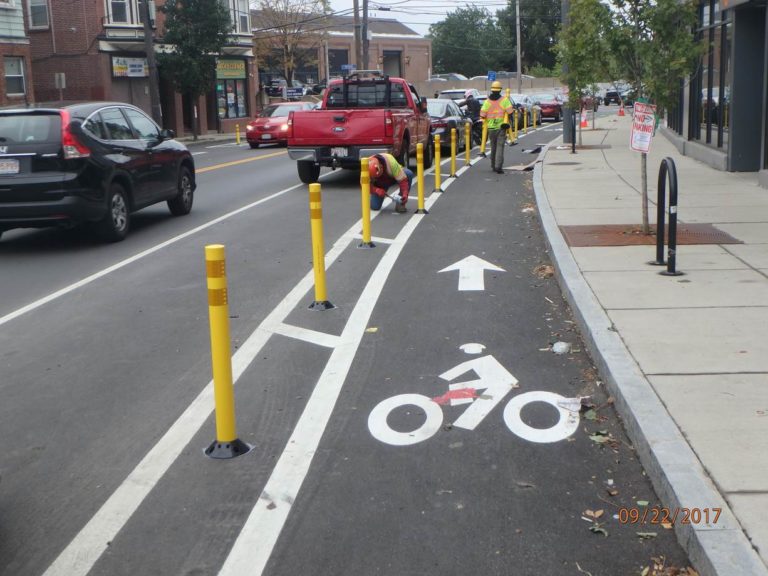SomerVision Number
in perpetuity by 2040
In the SomerVision 2040 process, the Transportation and Infrastructure topic chapter scope was: streets and roads, public transit, sidewalks, stormwater management, bike infrastructure, pedestrian experience, parking, accessibility. The topic chapters ended up getting split into two after the draft deadline. The Transportation portion was renamed to mobility to better reflect the depth of the topics.
Somerville residents report that use of modes like public transportation and bicycles promote strong community relationships. For example, one resident commented: “I knew everybody who was at my bus stop, and when somebody was missing, we noticed.” Research has shown that sustainable modes of travel make people happier and healthier.”
Somerville’s early system of rail and trolley stops and dense development have helped make the city the most compact in New England. This density of residential and commercial development enabled efficient mobility across neighborhoods. But when the Interstate Highway System was constructed in the mid-1900’s, many of the city’s transit routes were removed or relocated, replaced with high-speed roads made only for vehicular traffic.
STRENGTHS
The City of Somerville benefits from continued investment in transportation infrastructure from internal and external sources. The City’s financial strength, in the form of a AA1 bond rating and robust record of financial stewardship, is an advantage in seeking funding for capital and operational planning and construction projects. This was most recently demonstrated by Federal and State funding commitments to the Green Line Extension (GLX), which will add five new stations in the city and offer a one-seat ride to Downtown Boston, extend the Community Path, add 11 miles of new stormwater drainage, and put 85% of Somerville residents within a half-mile of a subway station (currently at 15%).Somerville has the physical foundation for improving access to multiple modes of transportation, including a pre-car layout, dense housing and employment centers, and connected neighborhoods. Most, but not all, of Somerville residents have convenient access to high-growth job centers and leisure activity districts through a variety of transportation modes both within and adjacent to Somerville, at nearby Alewife, Kendall Square, and Downtown Boston. Somerville residents enjoy strong connections on bus and rail networks running east/west and have access to an increasing number of mobility modes, including several bus lines, rail connections via the Red and Orange Lines, almost 30 BlueBikes stations, and bicycle infrastructure including painted and protected bicycle lanes. In particular, new bicycle lanes continue to grow in response to demand.Somerville is home to strong networks of engaged residents and public officials who advocate for increased access to transportation, including groups such as the Somerville Transportation Equity Partnership (STEP) and the Somerville Bicycle Advisory Committee (SBAC). Somerville residents are also vocal outside of organized groups in calls for increased transportation equity and access. Based on the 2017 U.S. Census American Community Survey, more than half of Somerville residents use sustainable modes of transportation to travel for work. Based on data collected by the City and its partners (including this Committee in SomerSuppers and other efforts) Somerville residents express a strong desire for safe, convenient access to sustainable transportation options for the majority of their trips. Residents want reliable public transportation access, safe bicycle lanes, and freedom of movement within the city with decreased congestion. This support encourages the City to make necessary investments in mobility planning and infrastructure.In step with this desire, the Administration committed to Vision Zero in 2017 and the Mobility division has created a Vision Zero Action Plan. Vision Zero aims to eliminate traffic fatalities and serious injuries on Somerville’s streets. The SBAC is also working on a Bicycle Network Plan which will help the City plan infrastructure and investment in the facilities needed.
CHALLENGES & OPPORTUNITIES
Somerville has a wide variety of opportunities and challenges related to mobility. The transportation network within Somerville allows the population to be mobile and brings people and business into and out of the city. Residents and businesses are seeking out Somerville partly because of its ease of access. However, transportation capacity and infrastructure has not kept pace. Buses and trains in Somerville are over capacity during rush hours. Buses are stuck on congested streets and run infrequently during off-hours. Cyclists and micro-mobility users share space with motor vehicles. People feel frustrated, angry, and sometimes unsafe during commutes. While most of Somerville residents enjoy access to multiple modes of transportation, not all do. The city lacks strong north/south transit connections. In addition, the topography and lack of north/south bicycle lanes can make cycling a challenge. The Assembly and Davis Square Neighborhoods have more transit and mobility options with train, bus, and multi-use paths than any other neighborhoods in Somerville. The City must recognize that the same convenient service is desired and necessary throughout Somerville. Historically, many groups have been left out of the transportation planning process, which results in the inequitable distribution of resources. Communities of color, seniors, people with low-incomes, youth, and persons with disabilities are disproportionately impacted by transportation decisions but are often not at the table when those decisions are made. It is critical to move forward acknowledging this deficit in order to increase equitable representation and participation surrounding transportation and infrastructure decisions.The City of Somerville must seize the growth opportunity for new and improved infrastructure. Increased housing, transportation, utility, and other needs due to increased population and job growth necessitates developing, updating, and/or changing infrastructure. Somerville has started to reassess the best use of the public rights-of-way. The recent conversion of Webster Avenue and Prospect Street to two-way roads successfully reduced car volume through the heart of Union Square by a third. Overall traffic on Prospect and Webster decreased by 10%. This is a significant opportunity to implement a large-scale mode shift in Somerville and increase both mobility and safety for all road users.Residents of Somerville, particularly East Somerville, suffer two-fold from roadways like I-93 and McGrath Highway. I-93 and McGrath cut off neighborhoods from other parts of the city and create high particulate rates from vehicular emissions. This results in increased health care costs and a higher risk of developing illnesses. While emissions are a large concern, noise pollution also has negative impacts on health and quality of life. There is an urgent need to reduce emissions in Somerville and to also make Somerville more resilient to transportation-induced public health concerns.While the infrastructure needs for some new transportation innovations are unknown, other infrastructure needs are easy to identify. Many sidewalks, crosswalks, and bus stops across the city are not fully accessible. This challenge is exacerbated by winter weather, overgrown shrubs, extreme heat, and flooding. Somerville’s ADA backlog is estimated at $75 million just to bring existing infrastructure up to standard. Vulnerable transportation users like seniors, persons with cognitive disabilities, vision, and mobility-impaired persons must be included in creating and improving safe methods of transportation. Improving safety for vulnerable road users will improve safety for everyone. For example, retiming Davis Square’s main intersection gave pedestrians 8 more pedestrian signals over the course of an hour. Despite some advances in safety, people are still being killed or seriously injured in crashes. Others feel limited in choice because of fear for their safety. Vision Zero is the City’s pledge to eliminate fatalities and serious injuries on our streets. It is imperative that the City create ambitious plans to address dangerous behavior and infrastructure on our streets. This is particularly salient for safe routes to school planning, because of the vulnerability of the road users. Traffic enforcement or infrastructure improvements would improvesafety for students and others because of the unique vulnerability of children crossing the street. In data collection efforts for this report, some Somerville residents also remarked that a high percentage of grade school and high school students are being driven to school. While the cause is difficult to ascertain, residents agree that there are no completely safe routes for children to get to school via walking or biking. The Community Path Extension is an opportunity to increase safety for students traveling to and from school and encourage families to walk or bike. It is important for the City to ensure safe and easy access to the Community Path from many different neighborhoods.The City must be proactive in responding to new and future transportation-related challenges. Innovations in transportation technology and delivery present both challenges and opportunities. These include automated vehicles, micro-mobility, and ride-sharing programs, also known as Transportation Network Companies (TNC) For example, the City must prepare for automated vehicles (AVs) and must proactively plan for automated technology – not passively accept how automated vehicles are marketed. Some additional points of note:
- Automated delivery vehicles may be the first deployed.
- While the focus of automated technology generally revolves around personal vehicles, there are opportunities for transit as well.
- Automated vehicles are a single mode; their integration should be approached as part of a comprehensive network of walking, bicycling, transit, motor vehicles, and other transportation.
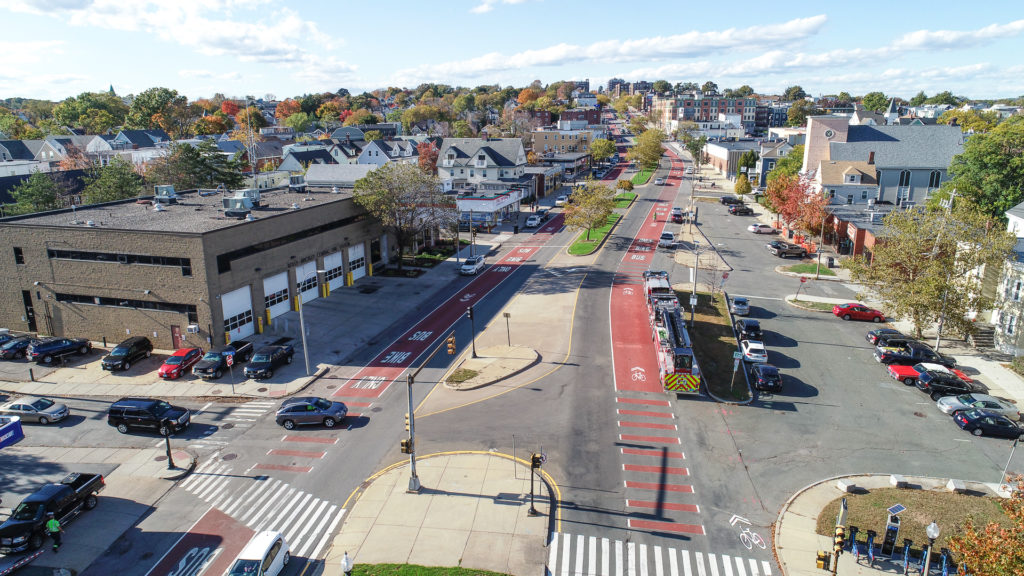
-
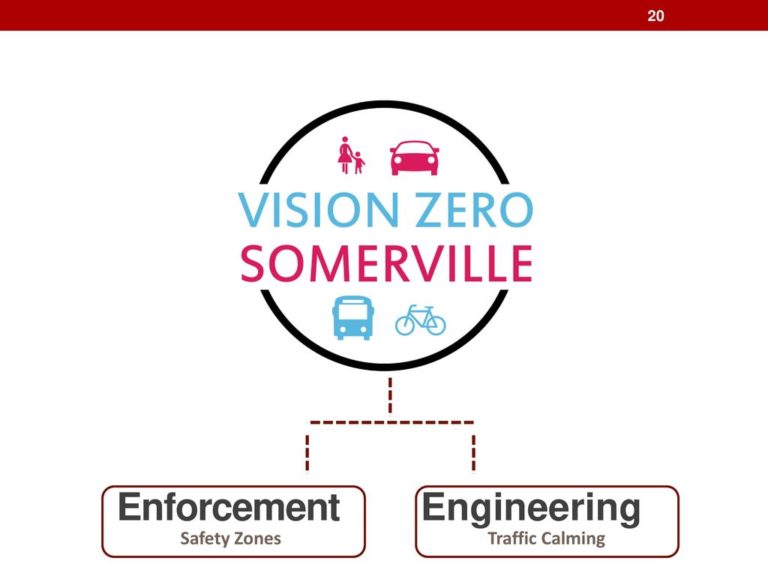
- Launched in 2017, Vision Zero is the City’s commitment to multimodal road safety - striving for zero roadway deaths and serious injuries. The initiative will take a multi-department, data-driven approach to improving safety for all road users, whether on bicycles or on foot, in vehicles, or aboard public transit. The Vision Zero Task Force and Action Plan will help us work towards that goal.
At a SomerVision community meeting, one person specifically asked, “If you’re on wheelchair, imagine trying to board a bus. Are other passengers going to try and help you? It is imperative that we address challenges associated with all transportation access for all people.”
Universal design is the concept of using design to ensure that buildings, products, or environments are accessible to everyone regardless of ability, age, or other factors. Universal design is not about meeting the minimum legal requirements of a regulation like the Americans with Disabilities Act, but rather applying creative thinking to create places and things that are easy and beautiful for everyone to use.
GOALS AND TAKEAWAYS
Reduce. Minimize the overall space in Somerville dedicated to personal vehicles.
Reduce Vehicle Miles Traveled (VMT). In order to achieve a multimodal and more environmentally-friendly system and create a community where people want to live, work, and play, Somerville would benefit by reducing VMT.
One is too many. Reduce crashes, road fatalities, and injuries in order to increase safety for everyone, especially vulnerable road users.Ensure that all bus stops are accessible, safe, and more comfortable for all users. Many bus stops in Somerville are not ADA compliant, lack lighting and seating, and feel unsafe.
EQUITY GOALS
Prioritize walking, biking, and transit access. Cities are more enjoyable, safer, and more economically prosperous when more space is dedicated to people than cars. Use reclaimed space to create new public spaces, safe infrastructure for sustainable mode users, and other community uses.
Increase transportation equity across the city. Historically, marginalized groups – specifically low-income communities and communities of color –have been left out of planning processes. These groups tend to live in areas with inadequate and unsafe transportation infrastructure. The City should increase access in underserved neighborhoods.
Prioritize vulnerable road users. When designing our streets, they must be safe for pedestrians, cyclists, people with disabilities, children, roadway workers, and other vulnerable populations and may require dedicated infrastructure for these users.
Reduce demand. Parking and personal vehicle use take up a lot of space and are not the best use of our land, we should reduce the space available for parking and personal vehicle use.
Proactively address new transportation innovations. Seek to maintain equitable access to public space and increase safety and mobility of all road users. Emerging transportation technology and programs should be integrated as part of a complete multimodal network. These innovations should augment the system as a whole, not preempt other modes.
Build sustainabile revenue streams. Expand the City’s options for financing transportation projects to ensure sustainable revenue streams and introduce new methods of funding both large and small improvements as well as maintenance.Invest in advocacy and actions. Improve infrastructure that reduces emissions and other pollutants.
Two for one. Encourage joint infrastructure and transportation projects that prioritize the movement of non-vehicular users.
POTENTIAL TASKS
• Continue to implement the City’s Complete Streets Ordinance which gives preference to pedestrians, transit, and cyclists first before personal vehicles.
• Increase north/south connections. Specifically, work with the MBTA to expand bus service. Also, add bicycle facilities and upgrade sidewalk infrastructure.
• Incentivize companies to decrease their commercial vehicle fleet by providing incentives for replacing cars and trucks with electric bicycles. For example, London’s “Bikes for Business” program encourages the replacement of vans with cargo bikes.
• Consider a congestion zone similar to New York City or London in areas with high congestion and pedestrian traffic.
• Develop a long-range bicycle network plan to create routes that will be safe enough for people of all ages and abilities to bike to all major destinations in Somerville.
• Develop standards for separation between bicycles and motor vehicles based on factors like vehicle speed and volume. Consider an ordinance like one passed in Cambridge to include protected bicycle lanes in all major street reconstruction projects.
• For all new bicycle lanes (and with a plan for existing bicycle lanes) utilize more durable materials than flexposts for quick-build projects, such as planters or precast curbs. Flexposts do not adequately protect riders from vehicles and discourage less confident riders from bicycling.
• Expand on Safe Routes to School proven methodologies, such as increased infrastructure for safe walking, biking, and transit. Methods could include visible active speed monitors, sidewalk bump-outs, speed humps, protected bicycle infrastructure, and enforcement
• Develop standards for crosswalks for safer, more accessible crossing. Possible opportunities include:
• Implementing Leading Pedestrian Intervals;
• Setting walk signal durations that take into SomerVision 2040Topic Chapters60consideration vulnerable road users; and
• Automatic walk signalization.
• Address speed and emerging safety issues (for example drug impaired driving), increased enforcement, infrastructure changes (for example raised crosswalks, chicanes, bumpouts, etc.), and public education and encouragement.
• Incentivize safe driving through public education and programs. Opportunities include:
• Creating a Somerville version of Boston’s Safest Driver Competition;
• Building a Traffic Garden to give a safe space for learning the rules of the road; and
• Utlizing movable message board signs that remind people about safety for all road users.
• Improve bus stops by adding or improving lighting, installing bus shelters, building “floating bus stops,” providing real-time arrival data, implementing national best practice including bus stop spacing, and other national best practices. Explore opportunities to make these updates distinctive, as a potential arts and culture collaboration.
• Add wayfinding information at bus stops, train stops, and bikeshare stations.
• Educate City staff on best practices and national pilot projects, such as Boston’s Play Around the City.
• Update the City’s parking policies to:
• Prioritize those who need on-street parking (for example those with disabilities);
• Include household limits;
• Include dynamic pricing in walkable centers;
• and Implement parking maximums for projects within a certain radius to rapid transit.
• Make the most of curb space by favoring pickup/dropoff zones, loading zones, and short term parking over long term storage.
• Pilot and create a plan for permanently pedestrianizing streets, particularly in high traffic areas such as squares and near active public spaces. Work with the Disabilities Commission and commercial vendors to accommodate mobility and business needs.
• Require a certain level of dense housing, especially affordable housing, around rapid transit to increase how many people can access rapid transit.• Address negative externalities and challenges associated with TNCs. Define pick-up zones and increase traffic enforcement in problem areas.
• Define protocol and safety standards for micro-mobility devices (scooters, e-bikes, etc) and communicate outcomes
• Explore innovative financing methods to fund new infrastructure projects, such as DIF districts, development impact and mobility fees, and transportation utility fees.
• Utilize Social Impact Funds, (funds from private organizations for the communities in which they exist) when possible.
• Work with the Commonwealth to reduce emissions caused by I-93 by reducing the number of cars on I-93 and restoring HOV lanes.
• Invest in a sidewalk state-of-good-repair database. Recruit volunteers and/or better utilize 311 to gather data on the condition of sidewalks in Somerville to understand where pain points are.
• Implement a “dig once” approach for right-of-way construction projects. This approach leverages opportunities including separating sanitary and sewer systems, installing cycle tracks, and implementing road diets.
• Update traffic signals with modern controls that are able to more easily adjust based on changes to all types of transportation volumes and modes.
• Pursue opportunities to electrify public transportation. Advocate for upgrading legacy commuter rail corridors to more frequent, electric multiple-unit trains.
• Work with the Commonwealth and regional partners to connect outlying transit centers and regional attractions.
• Prioritize public transit by investing in bus lanes and transit signal priority.
• Expand municipal snow clearance to also include sidewalks, perhaps even before streets are cleared.
